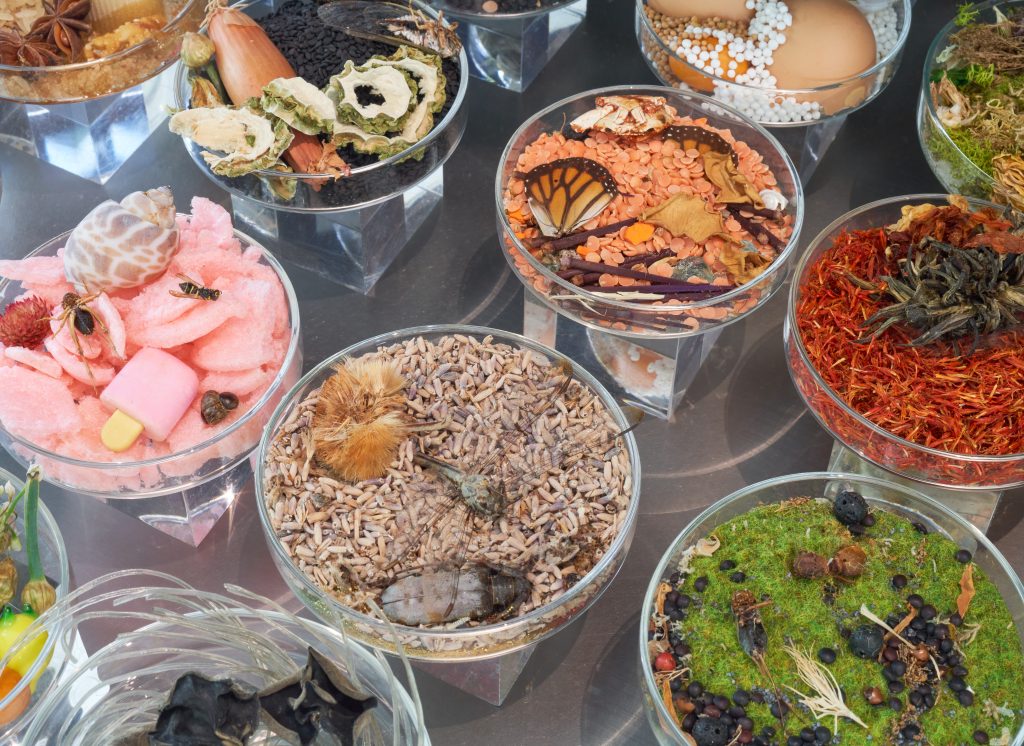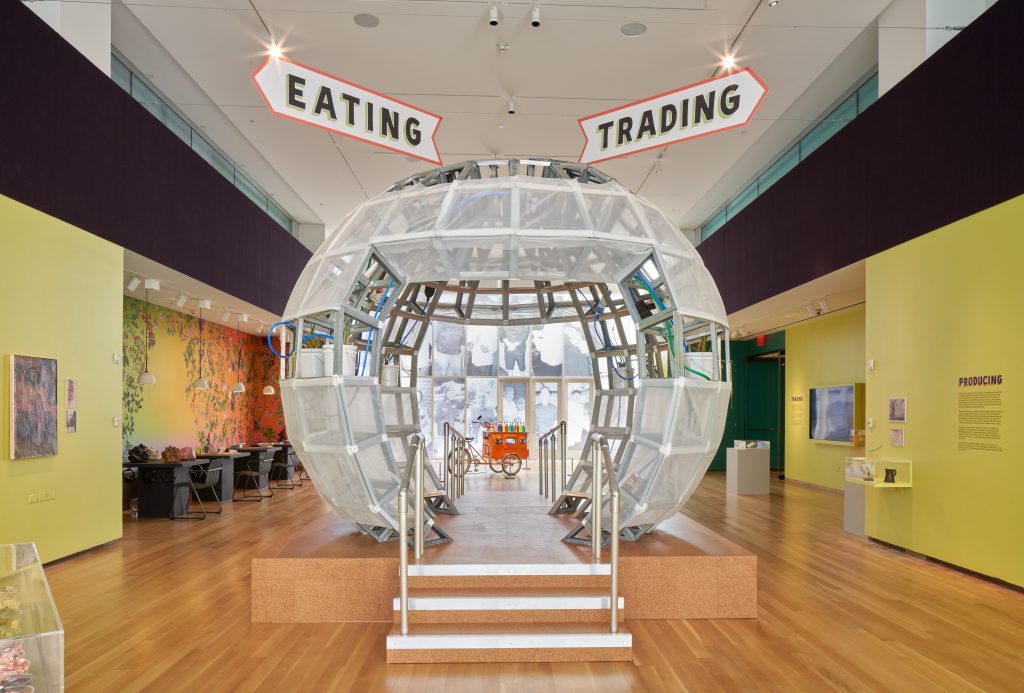“Food in New York: Bigger Than the Plate” Exhibit Re-Designs the City’s Foodways
Over 20 NYC artists converge inside the Museum of the City of New York to examine contemporary issues through the lens of nourishment

Often heralded as one of the culinary capitals of the world, New York City is made up of renowned and diverse food. “Literally,” says historian, environmental activist and curator at the Museum of the City of New York Monxo López. “Manhattan itself rests on oysters. A lot of the island that was created was done so with oyster shells.” This, as well as other fascinating and unearthed histories of the city, suffuse the museum’s latest exhibit Food in New York: Bigger Than the Plate, an indoor and outdoor installation that reveals and reimagines how and what New Yorkers eat and why. On view until September 2023, the exhibition grapples with mass consumerism, labor, climate change and other issues that haunt food systems in and beyond NYC.

The exhibit originally debuted in London’s Victoria and Albert Museum but has been translated to focus on the uniqueness of the five boroughs. Keeping only two of the artists featured in the original show, López looked to local artists and designers who have been addressing ideas of nourishment. “But conceptually I think we brought the spirit of the London show,” the curator continues. “Both shows are concerned about the challenges of the food system, making the system more sustainable, making the system more fair labor-wise and making the system more equitable so that everybody has equal access to healthy, nutritious, affordable food.”

Across the diverse works by 20+ contemporary artists, the show is organized into three parts: production, trading and eating. While these categories reveal the fragility and instability within growing, sourcing and serving meals, the show is by no means bleak. Instead, López explains, “It’s a very uplifting, colorful, vibrant show. We use that vibrancy and the colorfulness to drive home some of the solutions that are being proposed to the challenges that we have in the food system.”

From the show’s red- and green-hued entryways to bio-art pioneer Suzanne Anker‘s mesmerizing petri dishes and Tom Fruin’s “Bombora House” of discarded street signs, the exhibit paints a bright pathway forward. For instance, Björn Steinar Blumenstein and Johanna Seelemann’s “Banana Passport” and “Banana ‘Made In’ Label” unveils the fruit’s 14-day and 8,800- kilometers journey from Ecuador to Iceland, revealing the labor behind food exportation and questioning our relation to and demand for out-of-season produce. This call to re-think food systems is punctuated by a featured manifesto from MOLD (a digital and print magazine on the future of food, and a CH favorite) and the work of Field Meridians, their adjacent organization working to strengthen food ecologies.

“As a museum curator of New York and as a curator of history, I did want to bring in as much as possible from our own collections,” adds López. “There is a ton of stuff in our own collection that relates to the history of food in the city, so roughly half of the show is narrated through historical objects and then half of the show is carried by the work of contemporary artists.”
Included in this are rarely seen pieces from the museum’s collection, such as “Passover,” an etching from artist Philip Reisman made in 1925 and a recently restored “Diorama of the Fly Market,” which illustrates a food market that ran from 1699 to the 1800s in the city.

The museum’s pieces help put contemporary food systems in larger context and excavate how food has shaped the city socially and physically. As López explains, “When we talk about food systems in New York City, it’s not only about restaurants. There is a wonderful, very unique history particular to New York. For example, sugar.”
After being cultivated by people who were enslaved in the Caribbean, sugar was exported to New York, “one of the most important, if not the most important, sugar refineries in the world,” adds the curator. This led the city to become a vibrant candy and soda capital, the vestiges of which can be seen in converted factories and longstanding candy stores.

The show, says López, “is really an invitation for New Yorkers to become artists, stakeholders, in the food systems of the city. It’s to invite people to be active, to organize.” As a group show, the exhibit makes clear that this organization comes through collective action. “For this particular exhibit, one of the important messages is yes, it’s important to make individual changes and shop smartly, but on that individual level we’re not going to be as impactful. If we organize, if we band together with fellow-minded people, we will demand and create change,” he adds.

López also hopes the show helps bring attention to service and food workers. “There’s a lot of work that goes into feeding us. Those workers have value; they should be honored,” he says. “The show is about rendering the labor responsible for feeding us visible.”
In situating the city’s history through a culinary lens alongside artists who are re-imagining new, symbiotic relationships to food, the show emphasizes that what is made can always be un-made and thus, re-made. “That is the gist of the argument of the show,” says López. “Our food system was really different in the past. Human beings organized and took conscious decisions to shape it to the form that it is today. The food system is not natural; it is a human made invention. We designed it, but just as we shaped it, we can shape a change in the food systems of our future.”

A portable beehive from media artist Jan Mun, tableware that rewards you for sharing by Nur Saltik, entrancing photographs of vast cultivars of a single crop from Uli Westphal and other works in the exhibition guide the way forward. “I truly believe that we need to trust and honor the work that designers and artists are doing. I think that artists and designers have the freedom of imagine, to really lead the way into envisioning new ways of doing food,” concludes López. The exhibition calls on each of us to do the same.
Hero image of Suzanne Anker’s “Twilight” by Brad Farwell; courtesy of the artist and Museum of the City of New York












